
Roots
Consider, for a moment, the whisper of ancient hands tending to a crown of coils, the gentle touch of carved wood gliding through textured strands. This is where our exploration truly begins, a silent conversation across millennia. The tools crafted in those distant times — the combs and picks of our ancestors — stand not merely as artifacts of grooming, but as profound statements of understanding, of artistry, and of deep respect for hair as a living extension of self and community.
We seek to comprehend the ancestral knowledge that guided their creation, a wisdom born from intimate interaction with the specific contours and character of textured hair. This heritage, etched into every curve and tooth of these ancient implements, speaks volumes of ingenuity and care, a legacy often overlooked in our modern narratives.
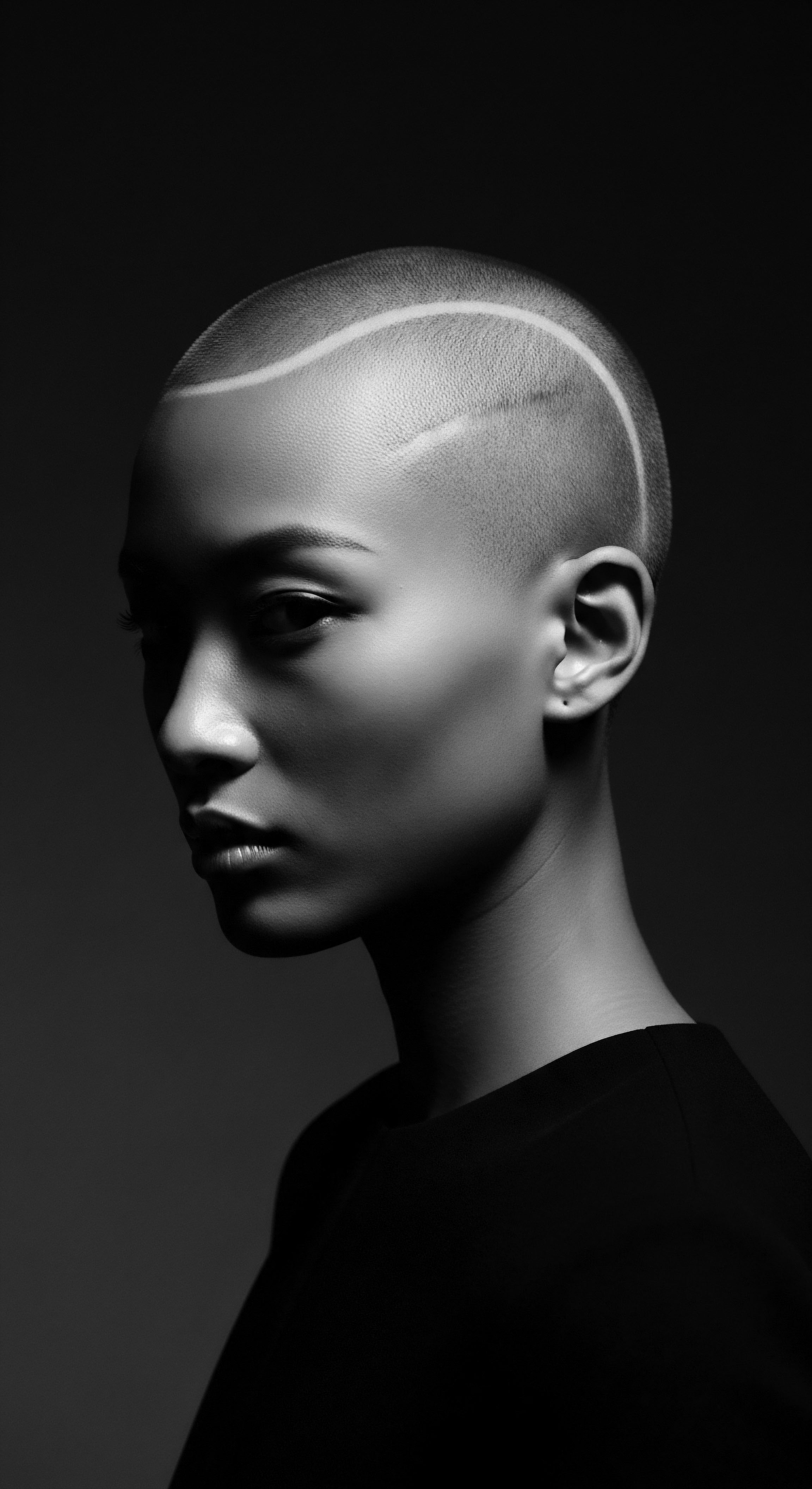
Hair’s Earliest Language
Before the advent of complex styling, the fundamental need remained ❉ to manage the hair. Textured hair, with its unique coil, curl, and wave patterns, presented particular considerations. Its natural propensity for clumping and shrinkage, while beautiful, also meant a greater likelihood of tangles. Early artisans, deeply attuned to the rhythms of nature and the human form, observed these characteristics.
They understood, without modern scientific terms, the structural integrity of a hair strand, how its outer layer, the cuticle, lay open or closed, and how its inherent elasticity allowed for movement and shape. This empirical knowledge, passed down through generations, shaped their approach to toolmaking.
Archaeological evidence tells a compelling story. Afro combs, or picks, have been in use for over 5,500 years, with some findings suggesting a history spanning as long as 7,000 years. These earliest examples, unearthed in regions of Kush and Kemet (present-day Sudan and Egypt), reveal that personal adornment and hair care held a significant place in these ancient societies. They were not just about tidiness; they reflected social communication, spiritual meaning, and personal identity.

What Materials Shaped Early Comb Design for Textured Hair?
The choice of material was rarely arbitrary. Ancient communities relied upon the resources immediately available, selecting those that offered both durability and a sympathetic interaction with hair.
- Wood ❉ A perennial favorite, wood offered versatility and a gentle touch. Different types of wood, from hardwoods to softer varieties, could be shaped, carved, and smoothed. Its porous nature might even absorb natural oils, aiding in distribution through textured strands over time. Wooden combs were common in ancient Egypt and continue to be favored for their ability to reduce static and glide smoothly.
- Bone ❉ Animal bone, a readily available byproduct of hunting, proved another strong candidate. It could be precisely carved, offering strength for detangling. Combs crafted from bone have been found in prehistoric and ancient Egyptian sites.
- Ivory and Horn ❉ For those of higher status, or in regions where such resources were accessible, ivory (from elephant or hippopotamus) and horn provided a material that could be polished to a high sheen and intricately carved, signifying wealth and prestige. Ancient Egyptian combs often featured detailed carvings of animals or deities.
Each material selection hinted at a practical understanding of hair mechanics, favoring those that would minimize breakage and friction against the naturally coiling structure of textured hair. The wide spacing of teeth, a hallmark of many ancient combs, was a direct response to the tendency of textured hair to tangle. This design allowed for the gentle separation of strands, working with the hair’s natural groupings rather than against them.
Ancestral hands, with profound knowledge of textured hair, meticulously shaped tools from nature’s bounty, ensuring gentle care for coils and curves.
Consider the dua’afe (wooden comb) from Ghana, deeply linked to femininity and beauty, its very form a testament to generations of collective wisdom on hair care and adornment. This tool speaks to a continuity of practice, a heritage carried forward in the very act of grooming.
| Material Source Wood (e.g. Sandalwood, Ebony) |
| Perceived Benefit for Textured Hair Gentle gliding, reduces static, distributes oils, less breakage. |
| Cultural Significance Widely accessible, often carved with symbolic motifs, signifies connection to nature. |
| Material Source Bone/Antler |
| Perceived Benefit for Textured Hair Durability, natural smoothness, effective detangling. |
| Cultural Significance Byproduct of sustenance, symbolic animal connections, often found in burials. |
| Material Source Ivory (from specific animals) |
| Perceived Benefit for Textured Hair High polish, status symbol, intricate carving potential. |
| Cultural Significance Wealth, royalty, spiritual importance, often associated with powerful animal figures. |
| Material Source Horn |
| Perceived Benefit for Textured Hair Similar to bone, can be heated and shaped, smooth finish. |
| Cultural Significance Utility, natural resourcefulness. |
| Material Source These choices were not arbitrary; they reflect a deep understanding of natural resources and hair's specific needs. |
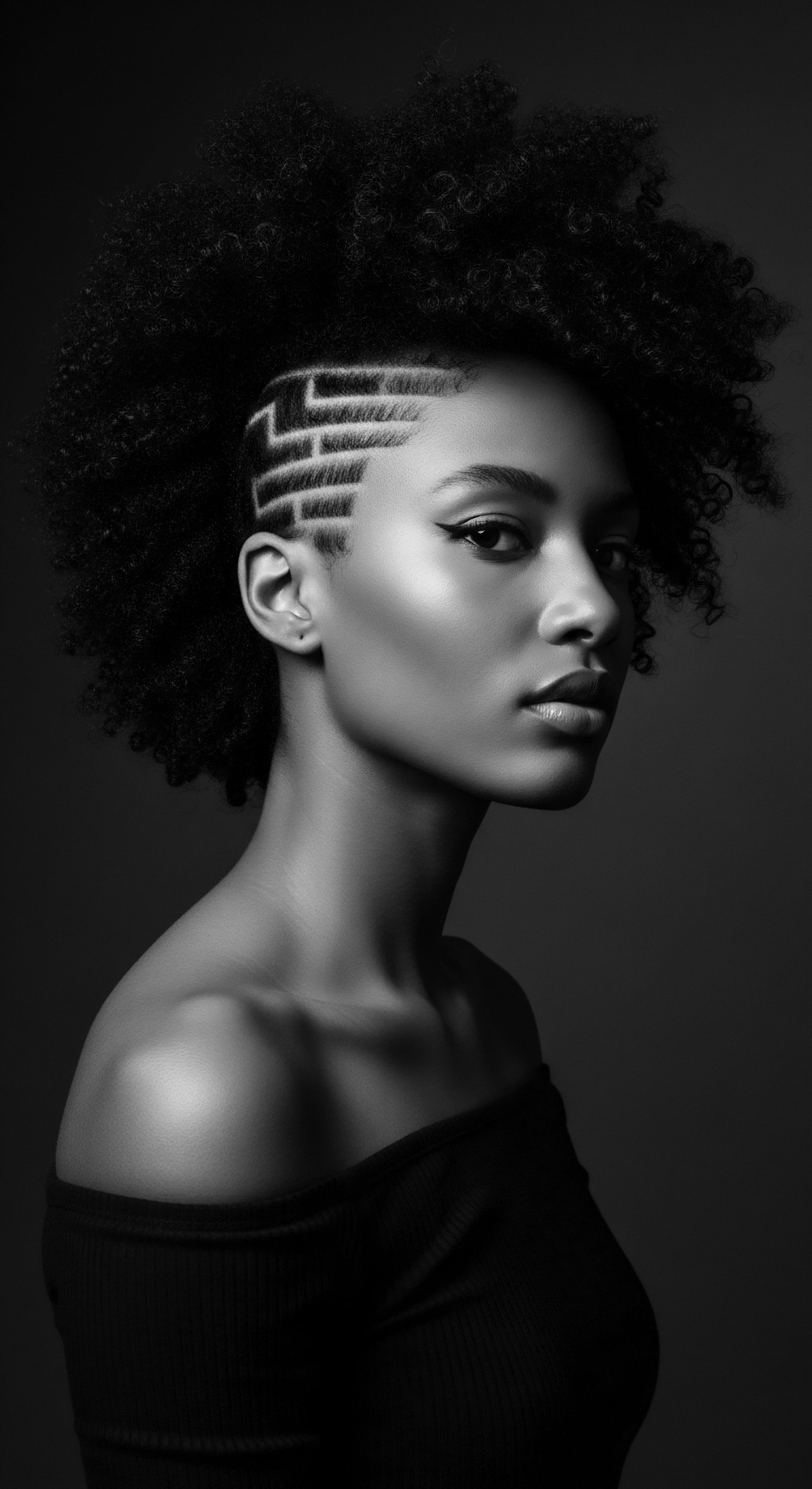
Ritual
The act of tending to textured hair, particularly with ancestral tools, transcended mere grooming; it blossomed into a profound ritual, an intimate exchange between the individual, the community, and generations past. The comb, a seemingly simple implement, became a central character in this unfolding story, its design reflecting not only practical considerations but also layers of cultural meaning, social standing, and spiritual connection. It was a silent partner in the creation of styles that communicated identity, status, and belief.
The art of styling textured hair, with its intricate braids, twists, and elaborate coiffures, demanded tools precisely suited to its architecture. Ancient artisans, with an intuitive grasp of hair’s unique properties—its coil memory, its shrinkage, its strength—designed combs that facilitated these complex expressions.

How Did Ancestral Comb Design Shape Hair Styling?
The distinctive features of ancient combs, especially those from African civilizations, were tailor-made for the nuances of textured hair. Their widespread teeth, a stark contrast to the fine-toothed combs found in many European contexts, allowed for delicate separation of coils without causing undue stress or breakage. This thoughtful design enabled styles that celebrated the hair’s natural volume and texture.
- Wide-Toothed Spacing ❉ This characteristic allowed for detangling larger sections of hair, working with the natural clumping of coils rather than ripping through them. It reduced friction and preserved the integrity of the hair strand.
- Long Teeth ❉ Many ancient afro combs featured long teeth, some specifically designed to stretch hair from the roots for desired styles. This allowed for sculpting and shaping voluminous hairstyles like the afro, which, while appearing natural, often required specific tools for its maintenance.
- Ergonomic Handles ❉ The handles often offered a comfortable grip, allowing for precise control during lengthy styling sessions. The design was for utility as much as for aesthetic appeal.
The functionality of these combs intertwined with the visual artistry of hairstyles. In pre-colonial Africa, hairstyles served as markers of tribal affiliation, marital status, age, and religious belief. A comb was not merely a tool to create a style; it was an extension of the cultural dialogue embedded within the hair itself. The archaeological record from Kush and Kemet, dating back 5,500 to 7,000 years, provides concrete evidence of combs buried alongside their owners, signifying their importance in life and for the afterlife.
These combs, often carved from wood, bone, or ivory, were adorned with symbols that spoke to a community’s values—animals, human figures, geometric patterns, or symbols of fertility and protection. This sculptural quality of combs reflects a society where aesthetics and utility were seamlessly bound.

Combs Beyond Utility in Ancient Communities?
Beyond their practical application in styling and detangling, combs held profound symbolic weight. In many African societies, the hair comb became a symbol of status, group affiliation, and religious beliefs. The handles, adorned with motifs, conveyed messages of social standing or spiritual connection. For instance, the dua’afe comb in Ghana is a historical example, deeply linked to womanhood and beauty.
This connection goes beyond simple beautification; it hints at a holistic understanding of hair as a reflection of internal well-being and communal harmony. Women, often holding leadership roles in hair care, would pass down techniques and the understanding of these tools, ensuring the continuity of ancestral knowledge.
Ancient combs, with their wide-spaced teeth and thoughtful handles, were artistic extensions of cultural identity, aiding styles that spoke volumes.
The practice of communal hair styling sessions, where elder women would tend to the hair of younger generations, served as informal schools of heritage. During these times, not only techniques but also stories, histories, and cultural values were imparted. The comb, present in these intimate settings, became a silent witness and a conduit for this intergenerational transfer of wisdom. This ritual of care solidified community bonds, reinforcing shared identities through the communal styling of textured hair.
The development of specific comb forms mirrored the evolution of complex hairstyles. The “pick” form, with its vertical design and long, sturdy teeth, was particularly adept at lifting and separating tightly coiled hair, allowing for volume and definition that celebrated the hair’s natural form. This was a direct response to the physical properties of heliotrichous hair – very curly hair – which has distinct needs when manipulated. (Heywood, 2013)
| Region/Culture Kush & Kemet (Ancient Egypt/Sudan) |
| Comb Characteristics Wooden, bone, ivory; long, wide teeth; decorated with animals, deities. |
| Symbolic Significance Status, royalty, spiritual connection, protection, buried with owners for afterlife. |
| Region/Culture Ghana (Dua'afe) |
| Comb Characteristics Wooden, often with specific carvings. |
| Symbolic Significance Femininity, beauty, womanhood, cultural heritage. |
| Region/Culture West African (Yoruba) |
| Comb Characteristics Long-toothed, necked, often wooden. |
| Symbolic Significance Gifts, friendship charms, seals of friendship. |
| Region/Culture Native American Tribes |
| Comb Characteristics Bone, shell, horn, antler, wood, tortoise shell; sometimes depict animals/people. |
| Symbolic Significance Pride, spiritual source of identity, connection to nature. |
| Region/Culture Combs were rarely just tools; they were powerful cultural artifacts reflecting social structures and beliefs. |

Relay
The wisdom embedded in ancestral comb design transcends the purely aesthetic, reaching into the very core of holistic hair care, nighttime routines, and practical solutions for managing textured hair. This deep lineage of knowledge, passed down through generations, constitutes a living library of practices that speak to a profound understanding of hair health, long before modern science articulated the biological mechanisms. The choices made in ancient comb creation — from the materials selected to the spacing of their teeth — were direct responses to the inherent biology of textured hair, recognizing its unique vulnerabilities and strengths. They prioritized gentle engagement and long-term vitality, laying a foundation for practices still relevant today.

What Ancestral Wisdom Guided Daily Hair Practices for Textured Hair?
Ancient communities understood that textured hair, with its tightly wound coils and susceptibility to dryness, demanded specific care. The very structure of the comb was a testament to this understanding. A wide-tooth design was not merely a stylistic choice; it was a biological necessity. When hair is wet, its keratin structure becomes more elastic, rendering it more susceptible to breakage if subjected to harsh pulling.
This is especially true for highly coily hair types. Ancestral comb designs, with their ample space between teeth, allowed water and conditioning agents (natural oils, plant extracts, butters) to distribute evenly while minimizing tensile stress on the hair shaft during detangling. This careful detangling was a critical step in preventing matting and promoting healthy growth.
For instance, traditional brass hair detanglers from certain ancestral practices, designed as a stick-like tool, were not only used for detangling but also for massaging the scalp, linking hair care to the body’s broader well-being. This speaks to a holistic worldview where hair care was inseparable from overall health, emphasizing practices that promoted circulation and nutrient delivery to the scalp, thus fostering an optimal environment for hair growth. Ancient Egyptians, for example, used oils and creams, often made from animal fats or plant extracts like castor oil and almond oil, to moisturize and soften hair, making it easier to comb and protecting it from insects.
The wide teeth of ancestral combs stand as a silent testimony to a deep, inherent understanding of textured hair’s delicate structure and its need for gentle detangling.
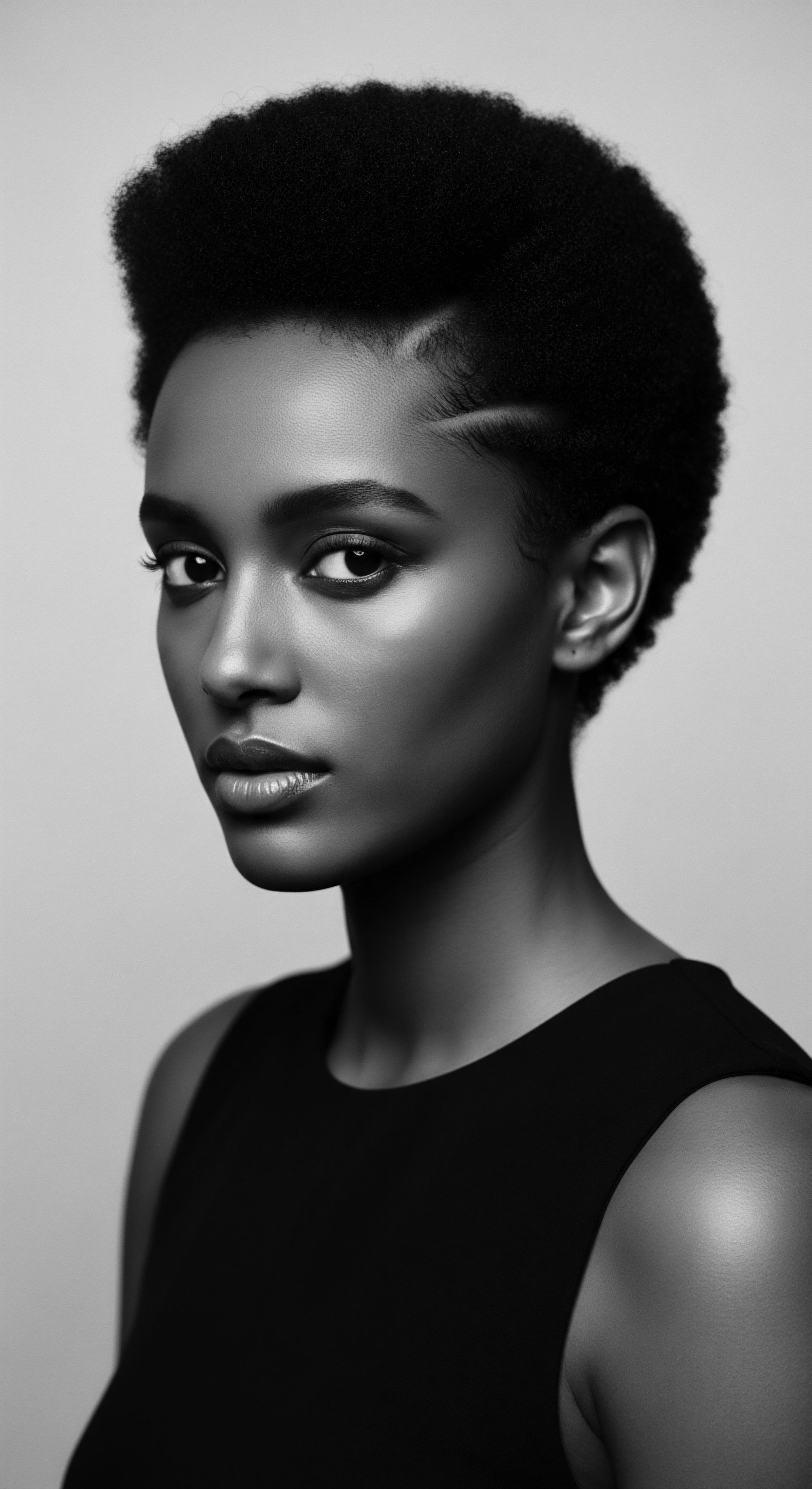
Nighttime Care and Comb’s Role
The concept of protecting hair during rest is far from new. While specific archaeological finds of “night combs” might be rare, the general principles of preserving hairstyles and minimizing friction were certainly known. The durability of ancient hairstyles, achieved through methods like braiding and twisting, implies a need for maintenance that carried over into sleep. A comb would have been instrumental in preparing hair for protective styles before rest, ensuring that strands were free of tangles and ready for the next day’s coiffure.
The use of head coverings during sleep, common across many African cultures, served a similar protective function, reducing friction against coarse sleeping surfaces and helping to maintain moisture. The ancestral comb, then, was part of a broader nocturnal ritual ❉ preparing the hair for protection, gently smoothing it, or aiding in securing styles that would withstand the night.
The knowledge of how to care for textured hair during sleep, ensuring its integrity, was passed down orally, often within the context of communal grooming. This tradition highlights a timeless appreciation for preserving hair’s health, acknowledging its vulnerability to daily wear and tear. The comb facilitated these protective measures, allowing individuals to gently work through their hair before braiding or wrapping, thereby minimizing breakage and maintaining moisture. This practice speaks to a foresight that recognized the continuous nature of hair care, extending beyond waking hours.

Solving Hair Challenges with Ancestral Comb Designs
Textured hair can present unique challenges, such as dryness, breakage, and persistent tangles. Ancient comb design offered direct solutions to these issues through its inherent characteristics. The wider teeth were paramount in preventing breakage during detangling, a common concern for hair prone to knotting. The absence of sharp edges or synthetic materials, often present in modern plastic combs, meant a reduced likelihood of snagging and tearing delicate strands.
This deliberate design mitigated common problems associated with textured hair management. For highly coily hair, which can be prone to tangling and knotting, a wide-tooth comb or finger detangling was a recognized recommendation.
The practice of “finger detangling,” still common today, likely predates formal comb use, where hands themselves served as the earliest tools for gentle separation of strands, working through knots patiently. This manual approach, often coupled with oils or water, would have been complemented by the wide-toothed ancestral combs when more thorough grooming was needed. Such combs would also have assisted in evenly distributing natural oils or herbal mixtures throughout the hair, contributing to its moisture balance and scalp health. The integration of comb usage within broader holistic wellness practices, such as scalp massages to stimulate blood flow, speaks to a deep awareness of the interconnectedness of hair and body well-being.
- Detangling Technique ❉ Ancestral combs, especially those with wide teeth, encouraged a patient, gentle detangling process, working from the ends upwards to minimize pulling and breakage on fragile hair.
- Moisture Distribution ❉ The design facilitated the even spread of natural oils, butters, and plant-based conditioners, crucial for maintaining hydration in textured hair.
- Scalp Stimulation ❉ The rounded, smooth teeth of many ancient combs could gently massage the scalp, promoting blood circulation and overall hair health.
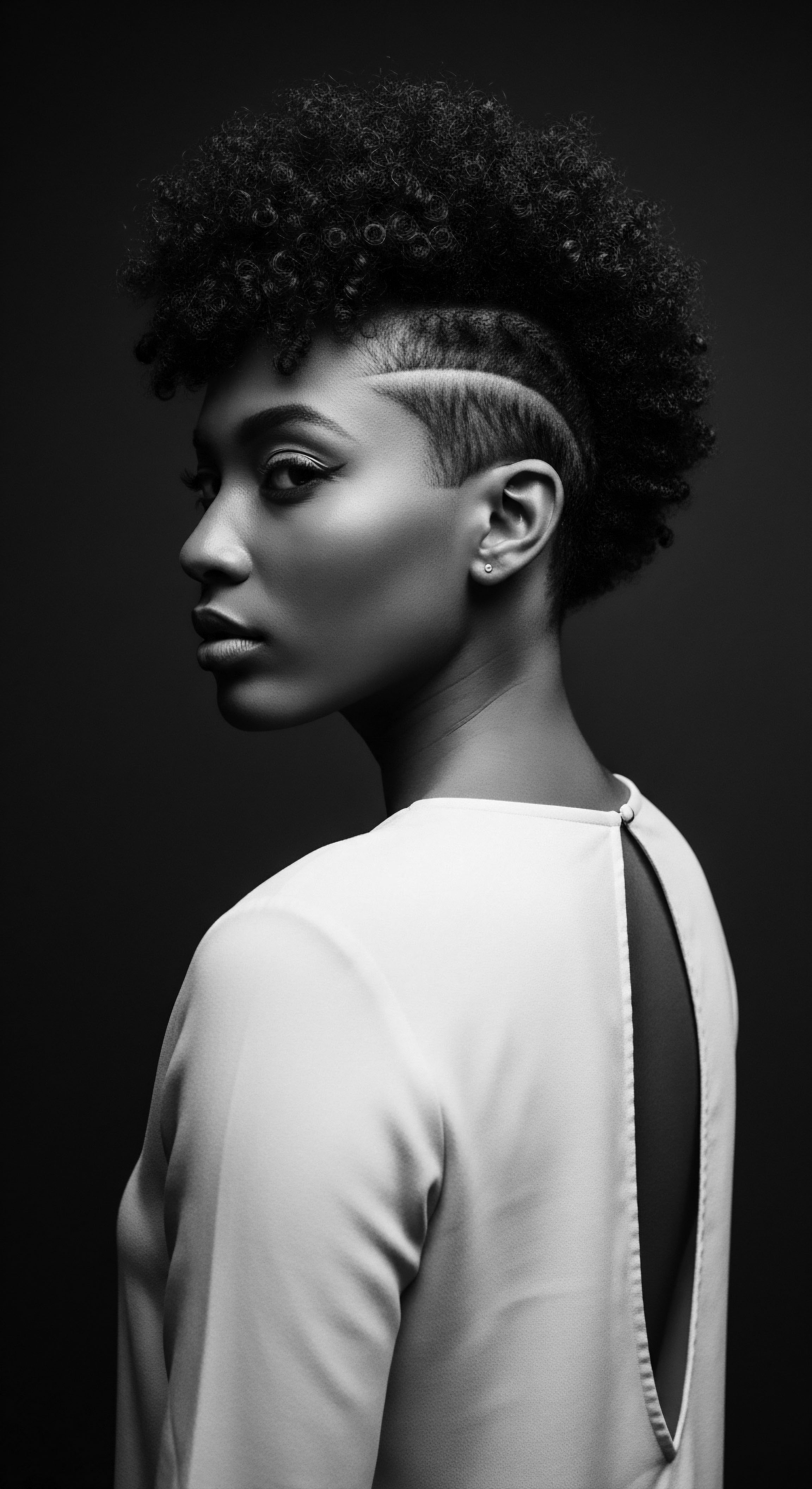
Reflection
The journey through ancestral knowledge woven into ancient comb design for textured hair reveals far more than simply the mechanics of grooming. It uncovers a profound historical dialogue, a continuous conversation between human hands, natural materials, and the living strands of heritage. The wisdom of ancient communities, particularly those of African and Indigenous descent, speaks to us through these artifacts, affirming that care for textured hair was never a mere utilitarian act; it was, and remains, a sacred practice, a cultural anchor, and a powerful statement of identity. The wide, thoughtful spacing of teeth, the choice of wood or bone, the symbolic carvings—all elements were carefully considered, reflecting an intuitive understanding of hair biology coupled with a deep reverence for its spiritual and social significance.
Roothea’s ‘Soul of a Strand’ ethos finds its true genesis in these ancestral foundations. It is in the echoes of these ancient practices that we discern the timeless principles of gentle detangling, mindful nourishment, and protective styling. These are not new discoveries, but rather a rediscovery of wisdom that has persevered through generations, often in the face of immense adversity. The resilience of textured hair, so often mirrored in the resilience of its people, is inextricably linked to the deliberate, heritage-infused care it has received across time.
Each curl, each coil, carries the genetic memory of survival, of beauty that refused to be diminished, and of practices that sustained both hair and spirit. The ancient comb, then, is a material manifestation of this enduring legacy, a physical connection to those who came before, reminding us that our hair is a living archive, a story of strength and beauty passed from elder to child, from past to present.
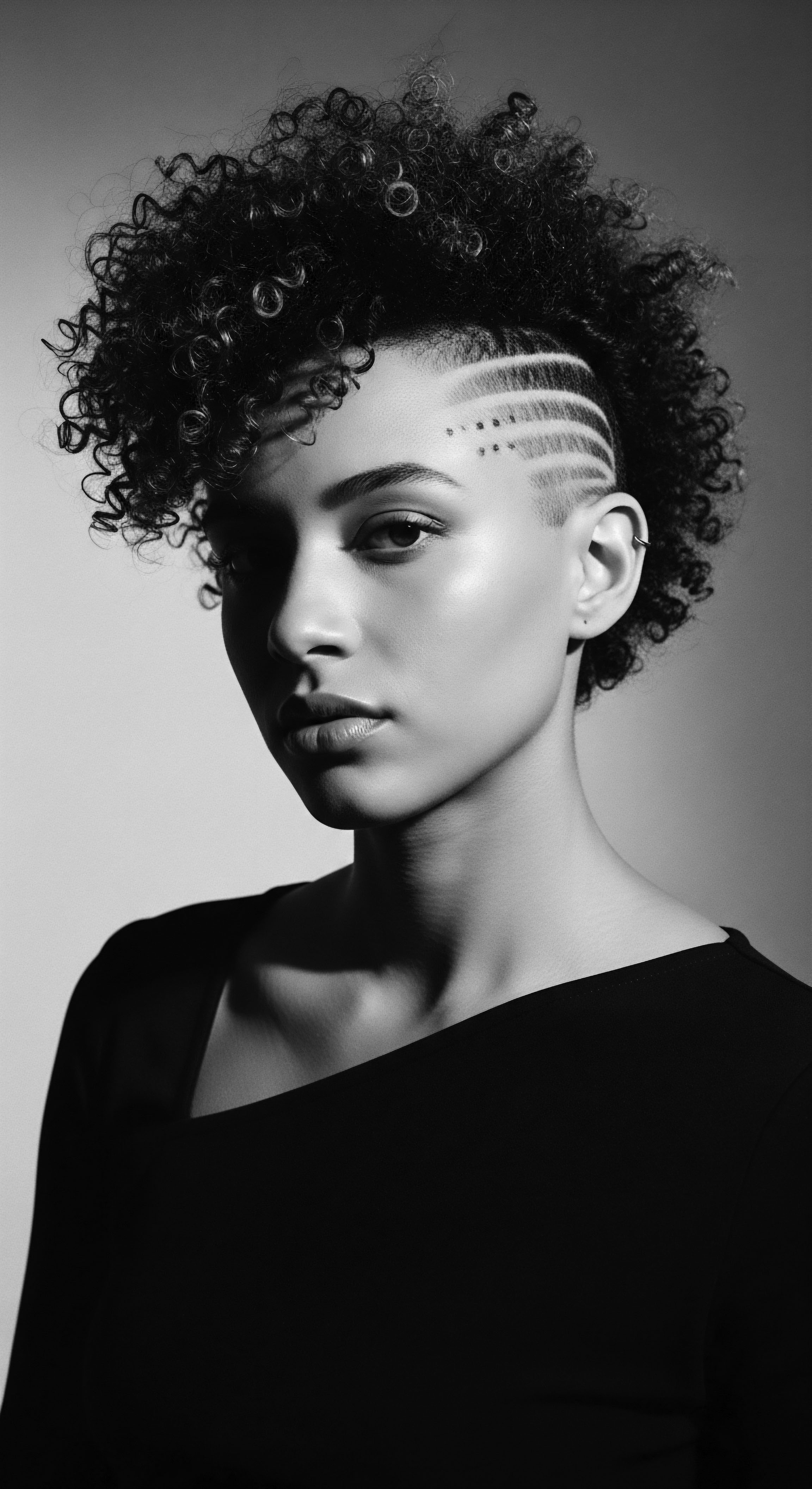
References
- Ashton, Sally-Ann. (2013). Origins of the Afro Comb ❉ 6,000 years of Culture, Politics and Identity. Fitzwilliam Museum.
- Tharps, Lori L. and Ayana D. Byrd. (2001). Hair Story ❉ Untangling the Roots of Black Hair in America. St. Martin’s Press.
- Callender, Valerie D. (2016). “Hair and Scalp Disorders in African American Women.” Journal of the American Academy of Dermatology, 75(2), pp. 347-360.
- Heywood, Felicity. (2013). “6000 years of the culture, politics and identity of the Afro Comb explored.” LSE Research Online .
- De Leon, Michelle. (2021). “The Afro Pik Has Richer Roots Than You Knew.” NaturallyCurly .
- Walker, A’Lelia Bundles. (2001). On Her Own Ground ❉ The Life and Times of Madam C. J. Walker. Scribner.
- Morrow, Elizabeth C. (2014). The Story of the Hair Comb. Amberley Publishing.
- Stokrocki, Mary. (2010). “An Intergenerational and Semiotic Exploration of Hair Combs.” Visual Arts Research, 36(2), pp. 38-51.
- Erlmann, Veit. (2010). African Stars ❉ Studies in Black Popular Culture. University of Chicago Press.
- Akbar, Na’im. (1998). Light from Ancient Africa. Mind Productions and Associates.
